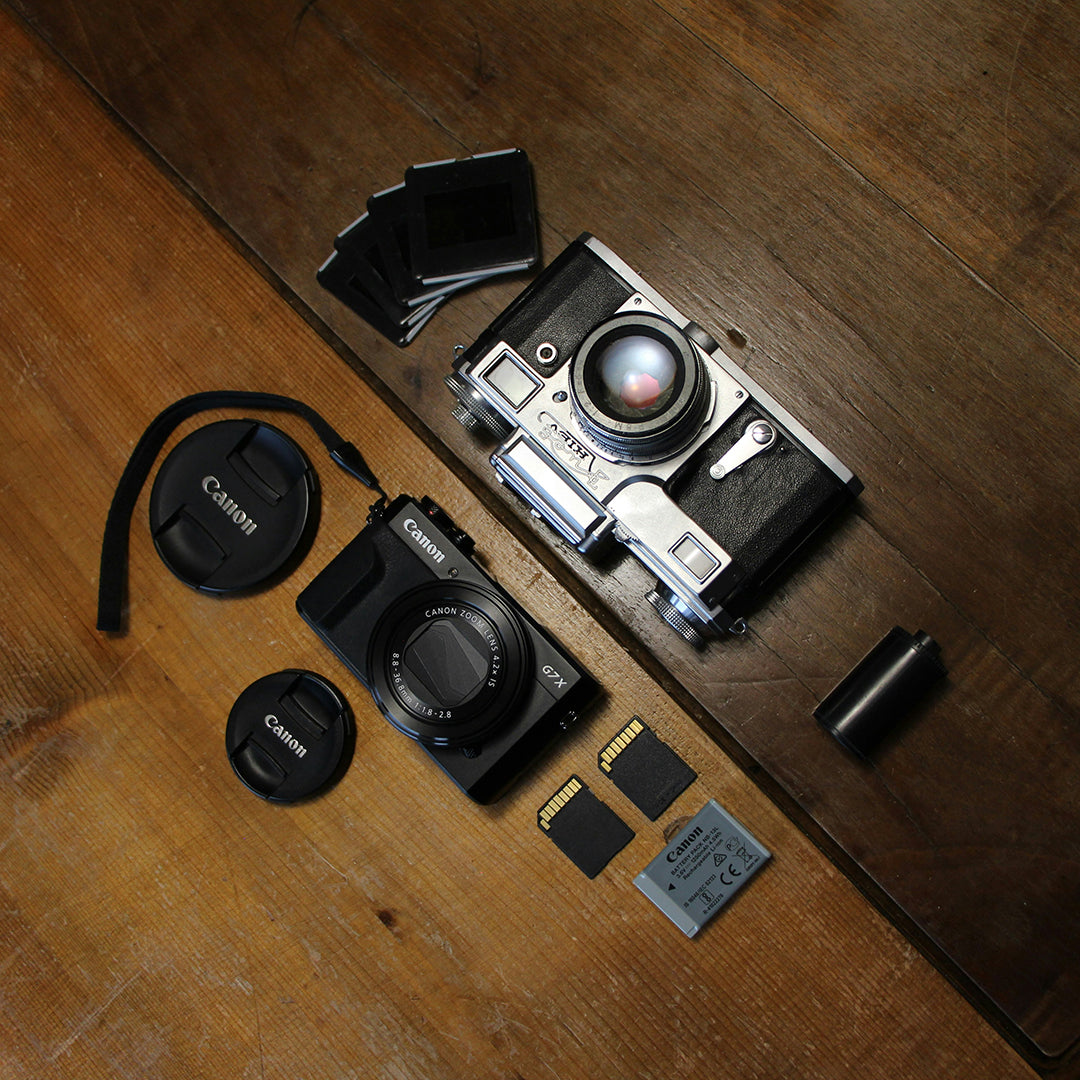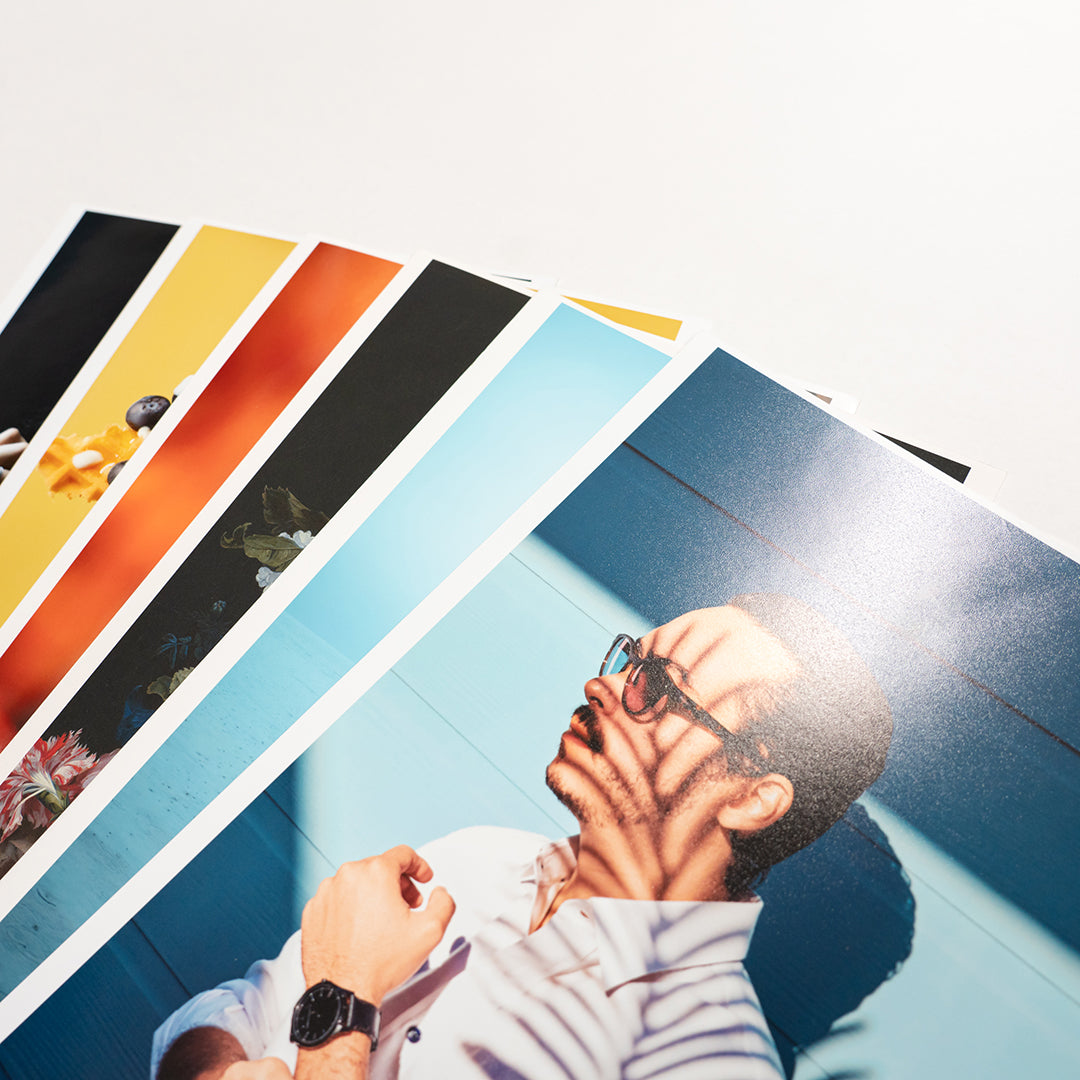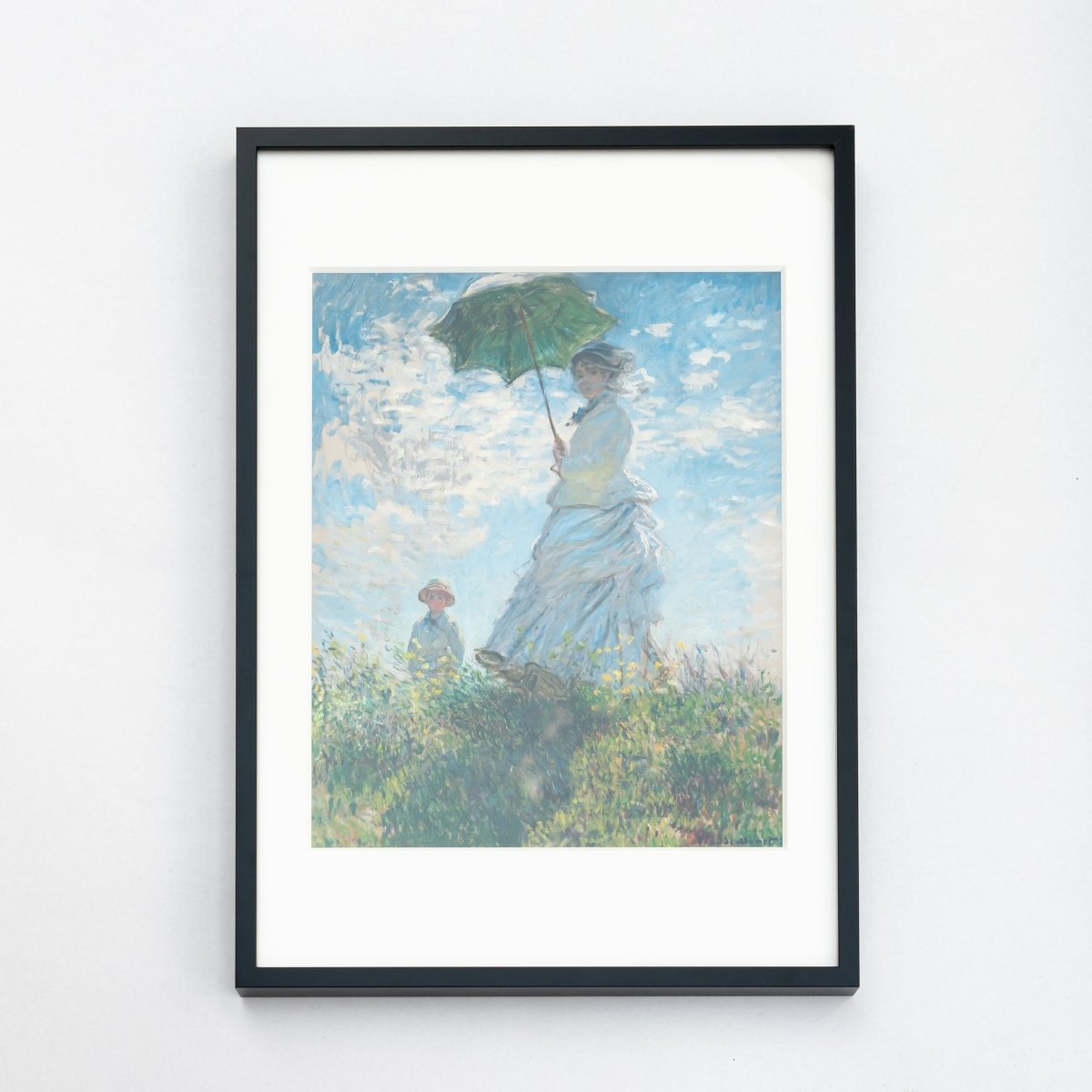Explain the difference between developing and printing! Which do you recommend?
table of contents
この記事について

PHOTOPRI(フォトプリ)
プロ品質の写真プリントサービス
「PHOTOPRI(フォトプリ)」は、写真展クオリティのプリントを提供する専門店です。一枚一枚の色を丁寧に調整し、30種類以上の用紙から最適なものを提案。あなたの作品が持つ魅力を最大限に引き出すお手伝いをします。大切な作品を、最高の形で残しませんか?
A thorough explanation of the difference between "developing" and "printing" photos! To ensure your work is of the highest quality
Hello! This is the PHOTOPRI staff. If you use a camera or handle photographs, you probably hear the words "developing" and "printing" often. But do you really understand what these words mean?
- What exactly does developing a photo involve?
- "What's the difference between developing and printing? Aren't they the same?"
- "Which knowledge is ultimately more important for my work?"
Many people may have this question. In fact, these terms tend to be confused, especially in today's world where digital photography is mainstream. However, understanding the difference between the two when it comes to creating your work is the first step to dramatically improving your photographic expression.
In this article, we'll explain in detail the meaning of "developing" in modern digital photography, from the film era to the clear difference between it and "printing," as well as tips for preserving your work in the best possible form. If you read to the end, we're sure your photography life will be enriched!

From film to digital. Times may change, but the basics of photo development and printing remain important.
What is "developing" a photo? – The magic of making it visible
What comes to mind when you hear the word "development"? Some people may picture a scene in a darkroom, under the red light of a paper soaked in chemicals, slowly revealing an image. This image refers to the "development" process of film cameras.
"Developing" in the film camera era
"Developing" a film camera is the process of converting the latent image (invisible image) recorded on the film when the photo was taken into a visible image (negative or positive film) through chemical processing. It is exactly what the word "developing" means: a process of "revealing an image."
- Objective: To visualize the light information recorded on film.
- Process: Chemical processing using chemicals such as developer, stop solution, and fixer.
- Result: Negative film (with inverted colors) or positive film (for slides, etc., with colors exactly as seen).
At this stage, the finished product is not yet a "print (photograph)" itself, but something like a "plate" that will be used to print it.
"Development" in the digital camera era – Creation from RAW data
So what is "development" in digital cameras? In fact, there is a process called "development" even in digital cameras. It is especially important when shooting in RAW data.
In-camera development (JPEG generation):
When you release the shutter on a digital camera, the image sensor converts light into an electrical signal and records that signal as digital data. The JPEG images we commonly see are generated by the camera's internal image processing engine "developing" this raw data by automatically adjusting white balance, sharpening, noise reduction, and color adjustment.
RAW Development (Software Processing):
RAW data, on the other hand, is "raw data" that records the light information captured by the image sensor with almost no processing. The process of using dedicated software (such as Adobe Lightroom Classic, Photoshop, or Capture One) to finely adjust the brightness, contrast, color, sharpness, and other aspects of this RAW data to your liking, and then exporting it to a standard image format such as JPEG or TIFF, is called "RAW development."

RAW development using software such as Adobe Lightroom is essentially digital darkroom work.
RAW development is an important step in maximizing creative control after shooting. It allows you to pursue greater freedom of expression without being bound by the settings at the time of shooting. For more information, please refer to this article.
What is RAW data? Explaining the advantages and disadvantages
Many professional photographers and people who are particular about creating their work perform this RAW development themselves, creating the best possible digital data before moving on to the next step, printing.
What is "printing" a photo? – The final process of creating a work
"Printing" (or "printing") refers to the process of converting developed negative film or digital image data taken with a digital camera and developed in RAW format into a viewable form by burning the image onto a physical medium such as photographic paper, art paper, or canvas, or by printing it out in ink.
- Objective: To transform digital data and film images into physical works that can be held in one's hands.
-
work:
- In the case of film: The film is exposed onto photographic paper using an enlarger and then developed (also called a "print").
- Digital: Using a printer to reproduce the image in ink on the paper of your choice.
- The result: a photograph you can hold in your hands, a piece of art you can hang on your wall.
At PHOTOPRI, we offer this printing service, and we are particularly skilled at giclee printing , which turns digital data into high-quality artwork.
"Developing" and "printing" are completely different things – why are they confused?
As we have seen so far, "developing" and "printing" refer to completely different steps in the photographic production process. However, especially among the general public, the phrase "developing a photo" is often used to mean "printing a photo."

Local photo shops offered both "developing" and "printing" as a service, so it may have been easy for the terms to be confused.
The main reason for this confusion dates back to the days when film cameras were mainstream. At the time, it was common for a photo shop to handle everything from developing (creating negatives) to printing (creating photographs) all in one go. Therefore, the act of "sending film to be developed" was almost synonymous with finally receiving a printed photograph.
Even in the digital age, the term "developing digital camera photos" is still used to mean printing photos from an SD card. However, strictly speaking, when printing digital camera data (especially JPEG, not RAW data), it is "printing" rather than "developing."
| item | Developing (film) | Development (Digital RAW) | |
|---|---|---|---|
| Main Objective | Making the latent image visible | Adjust and optimize RAW data | Putting the image into physical form |
| Main tasks | Chemical Treatment | Image adjustment in software | Printing using ink or light |
| input | Filmed footage | RAW data file | Developed film or digital image data |
| output | Negative film, positive film | Image files such as JPEG and TIFF | Photographs printed on photographic paper, art paper, etc. |
Your work in the best possible form – PHOTOPRI's high-quality "prints"
Once you have completed the digital data development process to get the results you want, the next step is to print it to bring out its full potential. At PHOTOPRI, we don't simply transfer images onto paper; we help artists give their work a tangible form.
PHOTOPRI's key features:
- Wide color gamut RGB direct printing: Faithfully reproduces the vibrant colors that tend to be lost with typical CMYK conversion. Also supports Adobe RGB.
- Ultra-high-definition giclee print of 2880 x 1440 dpi: Sharp and delicate reproduction of every detail of the work.
- Carefully selected paper lineup: We offer a wide selection of high-quality art papers from Japan and abroad, including Hahnemühle, Canson, Pictorico, and Awa Washi , to enrich the expression of your artwork.
- Long-lasting durability: Genuine Epson ink and high-quality paper provide lightfastness of over 30 years, preserving your precious work in beautiful condition for years to come.
The colors and details you've created through "development (RAW development)" will be ruined if the print quality is poor. At PHOTOPRI, we aim to reproduce the colors you adjust on your monitor as faithfully as possible. Our service is especially ideal for those who prioritize an RGB workflow.
First of all, why not check out the quality for yourself?

You're sure to find the perfect one for your project.
Frequently Asked Questions (Q&A)
- Q1: If I shoot in JPEG format, do I need to develop it?
- A1: JPEG images are already "developed" inside the camera. Therefore, additional "RAW development" is not possible. However, fine adjustments to brightness and color are possible. If you are looking for more advanced adjustments and better image quality, we recommend shooting in RAW data and "RAW development."
- Q2: The photo shop said, "We will develop your digital camera prints." What does this mean?
- A2: In many cases, this is used to mean "printing data from a digital camera." This is a matter of lingo, and unless you are actually providing RAW development services, it usually refers to printing work.
- Q3: What are the benefits of PHOTOPRI's RGB printing over data I developed myself using RAW?
- A3: The major benefit is that you can print the wide color gamut and rich gradation that you have carefully created through RAW development while minimizing color changes caused by CMYK conversion. In particular, those who work in a wide color space such as Adobe RGB can expect a finished product that is close to the image they see on the monitor. For more information, please see the page about submitting data .
Summary – Understanding "development" and "printing" will deepen your creative process
This time, we explained two basic but often confused terms in photographic production: "development" and "printing."
- Development: The process of visualizing film images or optimizing digital raw data into image files.
- Printing: The process of reproducing an image on physical media such as paper from developed data or film.
Correctly understanding these differences is essential to broadening the scope of your photographic expression and further improving the quality of your work. Particularly in the digital age, the value of your photographs is greatly influenced by the freedom of expression afforded by RAW development and the final finish achieved through high-quality printing.
At PHOTOPRI, we promise to turn your important developed data into a tangible form using the best printing technology. Why not preserve your work in the highest quality?
Related keywords
この記事を書いた人

PHOTOPRI(フォトプリ)
プロ品質の写真プリントサービス
「PHOTOPRI(フォトプリ)」は、写真展クオリティのプリントを提供する専門店です。一枚一枚の色を丁寧に調整し、30種類以上の用紙から最適なものを提案。あなたの作品が持つ魅力を最大限に引き出すお手伝いをします。大切な作品を、最高の形で残しませんか?



